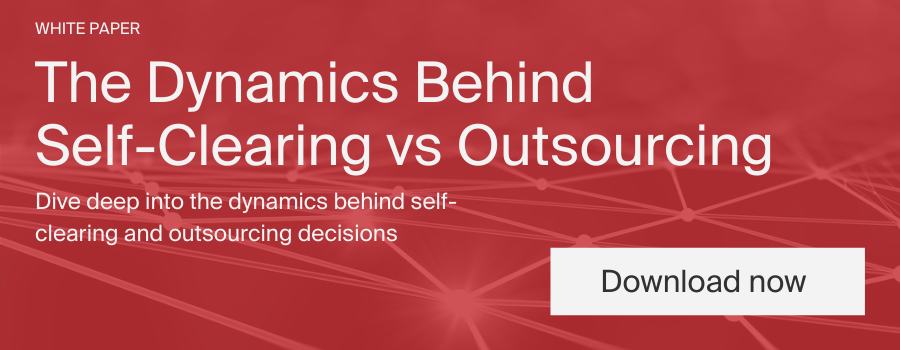
USING MODULAR TECHNOLOGY CAN PREVENT MISSTEPS IN IMPLEMENTATION.
Many financial technologists will have fielded well-meaning questions from business colleagues about employing the latest IT trend. Equally, business leaders may have found themselves frustrated when technology appears to fall below the promise it offers. Banks need a way to put a toe in the water and determine if the temperature is right.
‘Hype’ can impair effective technology implementation, by setting expectations at the wrong level. The propensity to misjudge IT’s impact was captured in ‘Amara’s Law’, named after Roy Amara, the president of the American think tank ‘The Institute for the Future’. In the 1970s, he was known for the mantra:
“We tend to overestimate the effect of a technology in the short run and underestimate the effect in the long run.
If Amara’s Law represents the expected impact of technology, ‘Moore’s Law’, represents the actual performance of technology. It was observed by Intel co-founder Gordon Moore, who found that the number of transistors in circuits was doubling every two years, giving a loose measure to the broad sense of IT evolution.
When buying technology, financial services firms need to find a middle ground somewhere between these two laws, understanding how technology will deliver change, but not leapfrogging into the future and finding that ambitions are unfulfilled.
To take a measured approach, a bank has to be able to on-board technology in a sustainable way. Fundamentally, that means the systems it acquires have to be built in a modular fashion. Equally importantly, the modules must support defined areas, in order to provide a measurable advantage in process and efficiency over existing technology.
All industries are currently being disrupted by the Fourth Industrial Revolution which builds on the hardware of the Third Industrial Revolution by allowing information and data to be more easily moved, stored and understood. Legacy systems from the Third Revolution are creaking under the strain of supporting enterprises in these efforts.
Fourth Industrial Revolution technologies are characterised by the way they can manage data through the use of virtualisation and networking. As such, they can scale and change without needing to accommodate any specific characteristics. They can also interoperate with other technologies moving beyond the paradigm of technology silos.
Rather than focusing on large scale improvements many new technologies promise – from distributed ledger to artificial intelligence – it is important for businesses to engage in change by taking advantage of some of the specific characteristics that these new technologies offer. Incrementally entwining new systems into the way a firm works allows acclimatisation to the new model.
A good example is the use of cloud-based systems, which can free a bank from commitment to owning the underlying hardware needed to support a given operation. On-demand processing power reduces capital expenditure and keeps cost in line with what is needed. At an application level, banks can use cloud to virtualise data and flow it easily from one function to another. Ensuring that the data can be understood across the systems depends on effective use of application programming interfaces (APIs) and pre-integrated components.
These abilities are of particular interest in finance, as the level of quantifiable information being generated is increasing exponentially. The demand for analysis of that data is equally intense. From various regulatory requirements, to the need to quantify risk internally, there is a pressure on firms to efficiently mine the information that resides within them.
To move forward, banks do not have to take a leap of faith, from one set of revolutionary technologies to the next. Incremental change is possible, tackling specific problems with discrete systems and tools.
Taking a modular approach will provide a series of advantages. Firstly, the systems involved can be tried and tested against the task at hand. That allows the practical application – rather than the hype – to be assessed in situ. Their introduction requires minimal adaptation within the business the specific function needed to manage the use of a particular tool.
Secondly, and consequentially, risk is lower as the scale of change is tailored to the firm’s specific needs. That correlates with a lower cost for change, but also less disruption. There is more limited collateral change required to support a specific function.
Thirdly, where gains are made, these can be scaled up across the business by rolling out other parts of the system to address other functions which need improvement as and when they are ready.
The latter point is crucial. Demand for better aggregation and analysis of data will continue to grow and that will generate increasing pressure on existing IT architecture. Banks relying on legacy technologies are already facing performance challenges today. An open platform is needed to allow them to progress, while testing their footing all the way.
About Torstone Technology
Torstone is a leading global provider of cross-asset securities and derivatives post-trade processing technology. Torstone’s modern, award-winning Inferno platform is fast, flexible and future-proof. It enables global financial firms to reduce their costs, achieve greater control, minimise risk, and drive operational efficiency. Combining many decades of investment banking expertise with in-depth global financial market and technology industry knowledge, Torstone offers agile, secure, scalable, and cost-effective solutions.





